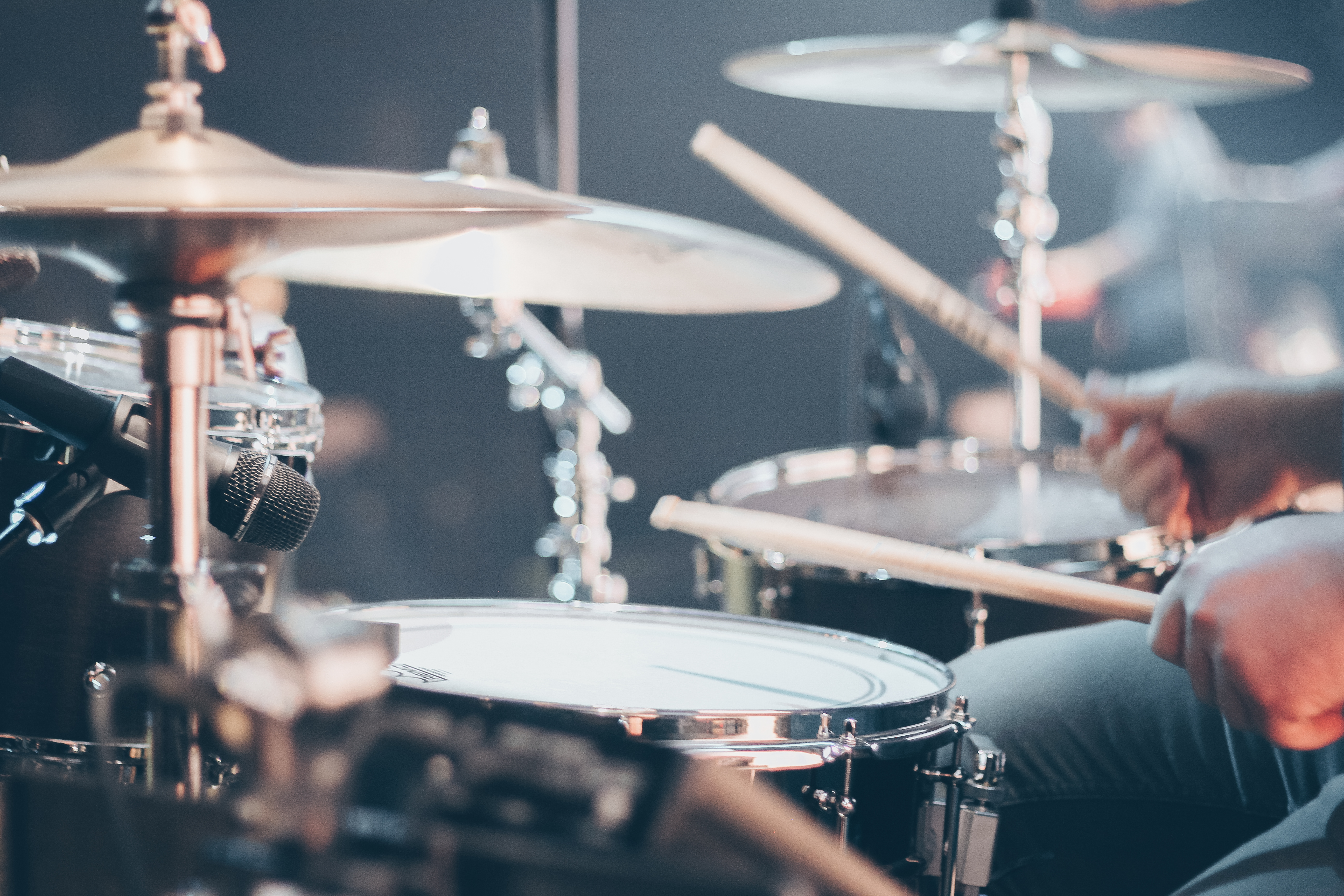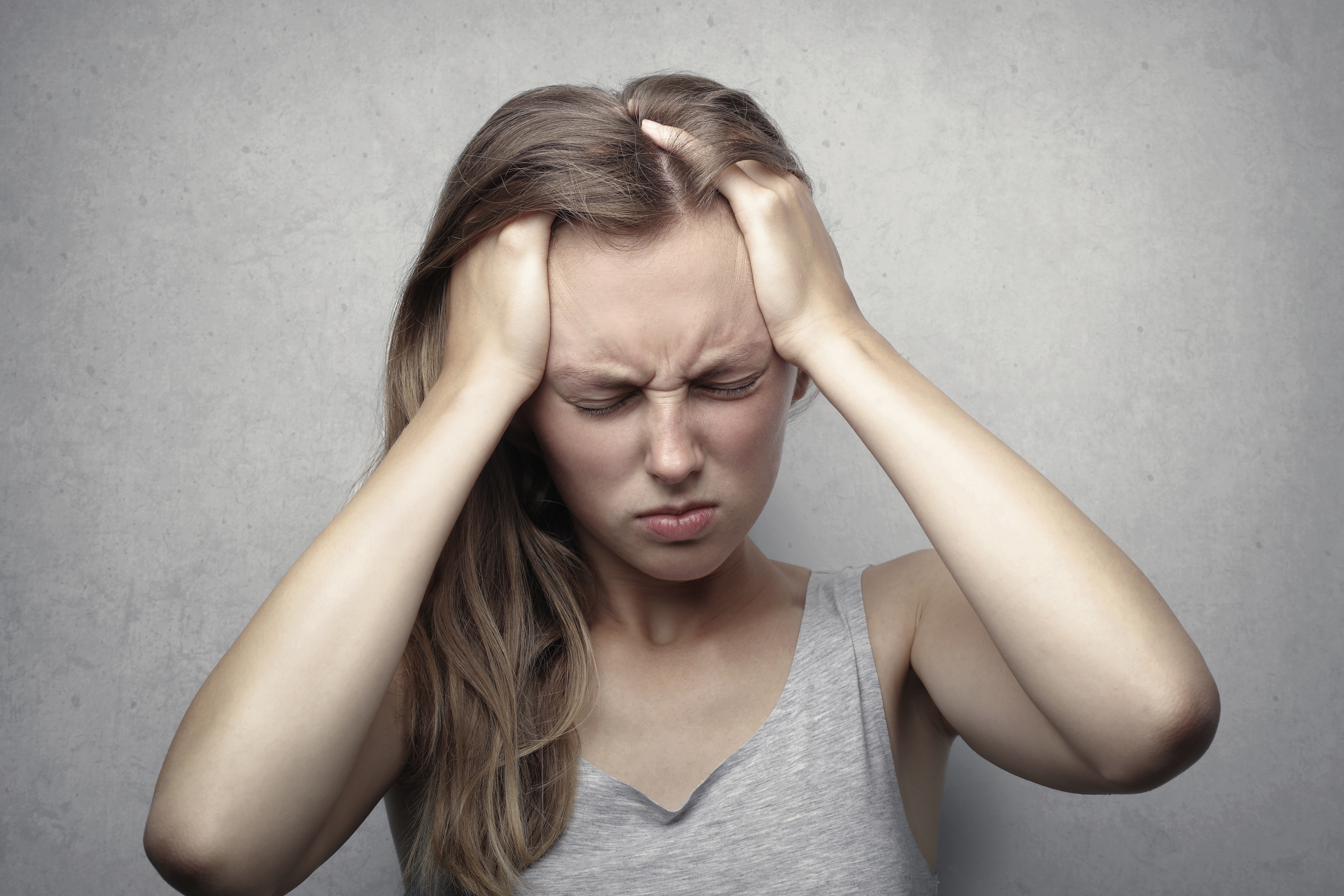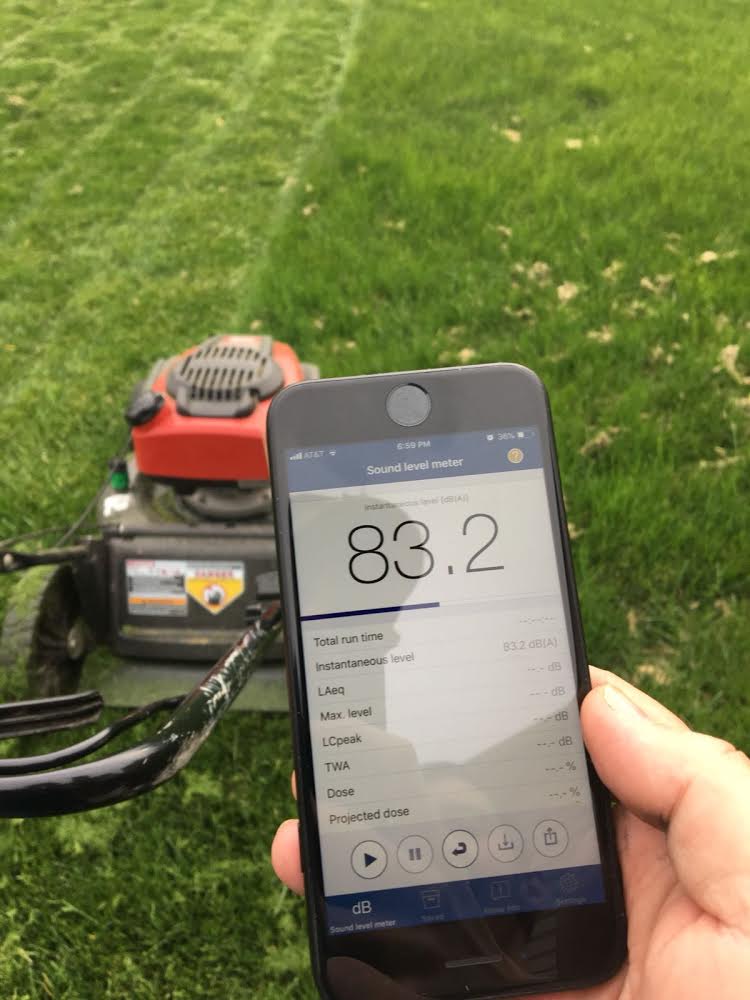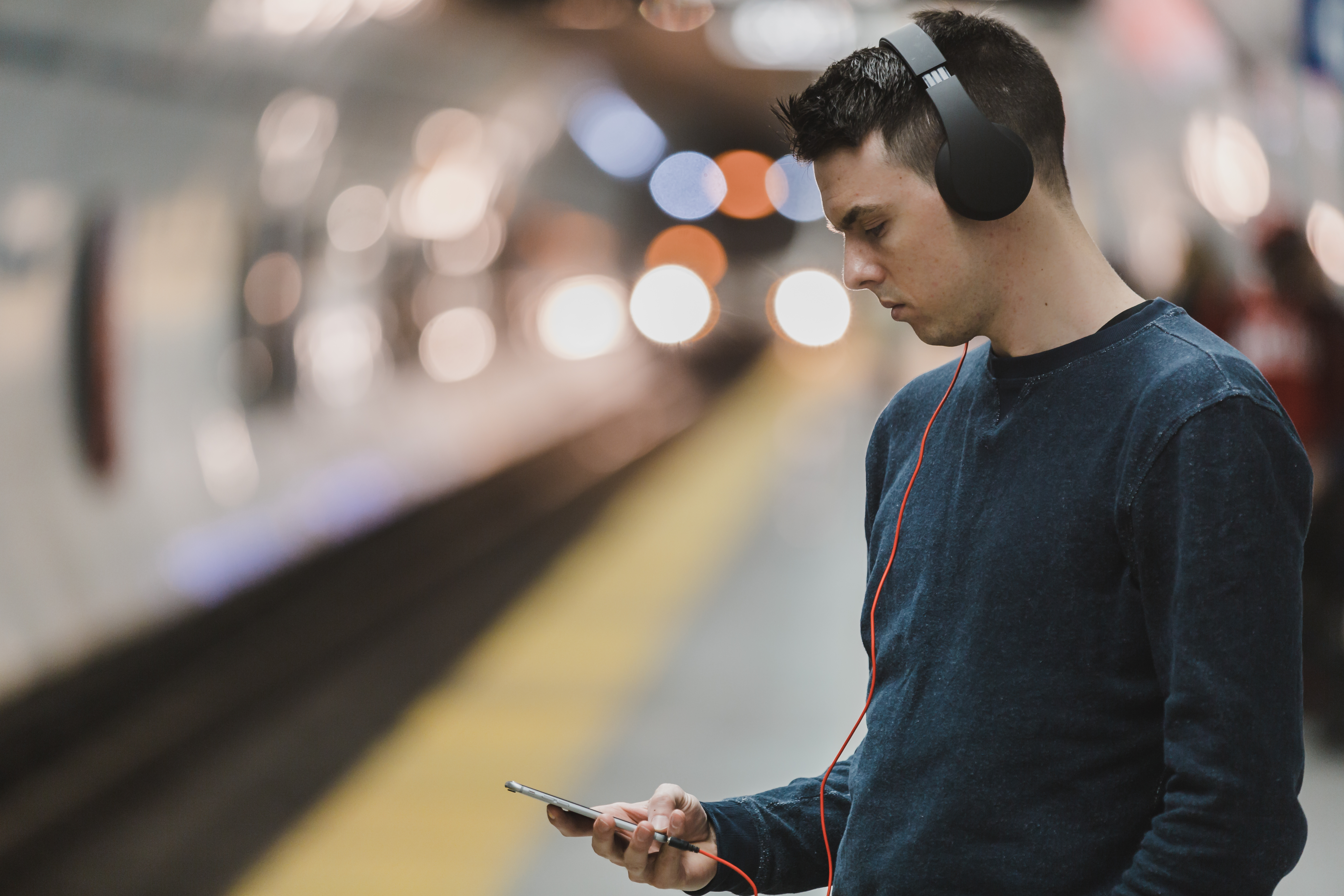See also: Articles on Music, Hearing Loss, and Hearing Devices 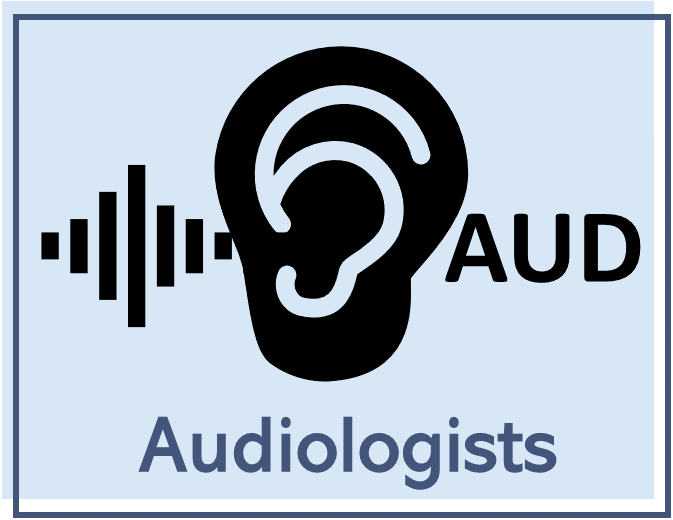
As you read this website, keep in mind the following:
-
People with hearing loss can differ in many ways.
-
Some information may be more applicable.
-
Pick and choose the information most useful for you.
Music-Induced Hearing Loss:
Information for Audiologists
1, 2
Introduction
As an audiologist, some of your patients may be musicians who have hearing loss or who wish to prevent further loss. This may include recreational and professional musicians, as well as avid music listeners.
Music-induced hearing loss (MIHL) is a common phenomenon among those who frequently listen to or play music. In 2015, the World Health Organization warned that 1.1 billion young people (or about 50%) were at risk of hearing loss due to personal listening devices and loud music venues in which sounds may reach 120 dB for hours on end (80 dB and lower is considered safe by NIOSH). Even though music settings may be just as loud as construction sites, factories, riflery ranges, or lawn mowers, many music listeners and musicians do not use hearing protection (Olson et al., 2016; Verbeek et al., 2014). Many are unaware of the risks from prolonged listening to loud music.
Topics covered on this page include:
This page describes risk factors for music-induced hearing loss and tips for healthy listening to share with your patients.
MIHL Symptoms
Music-Induced Hearing Loss (MIHL):
Music-induced hearing loss is hearing loss resulting from exposure to high levels of music over prolonged periods of time.
-
There are 5 hearing disorders caused by music-induced hearing loss (Kahari et al., 2003).
-
Hearing loss
-
Total or partial inability to hear sounds. In MIHL this often, but not always, affects higher frequencies
-
To hear an example of speech with the loss of high frequencies click on this link.
-
-
-
Distortion of sound
-
Sounds (such as "s" and "t" consonants) may blur together and lack clarity
-
To hear an example of hearing loss with lack of clarity click on this link.
-
-
-
Tinnitus
-
Perception of sound in the absence of it (such as whistling, buzzing or roaring sounds within the ear or head)
-
To hear examples of tinnitus click on this link.
-
-
-
Hyperacusis
-
Decreased sound tolerance; increased physical discomfort from sounds that are loud, but tolerable to others
-
Hyperacusis can lead to phonophobia - the fear of sound
-
-
Diplacusis
-
Distortion of pitch
-
One pitch may sound like different pitches to each ear or as different pitches in the same ear
-
This makes matching pitches difficult, one note being heard as two
-
To hear an example of diplacusis click on this link.
-
-
-
What puts music listeners at risk for MIHL?
-
Defining risk is complicated. There are three main organizations that have differing dB levels for safe sound exposure.
-
World Health Organization (WHO)
-
Safe sound: 80 dB and below
-
-
National Institute for Occupational Safety and Health (NIOSH)
-
Safe sound: 85 dB and below
-
-
Occupational Safety and Health Administration (OSHA)
-
Safe sound: 90 dB and below
-
-
While there are small differences in these definitions (exact dB at which sounds are risky), all three organizations acknowledge that prolonged exposure to loud sounds including music is harmful to hearing.
-
-
Any sound, even those we enjoy such as music, can cause hearing loss.
-
Repeated exposure to sound 85 dB or louder (the sound of a window AC unit) for 8 hours or more a day can cause premature and permanent hearing loss (National Institute on Deafness and Other Communication Disorders, 2019).
-
Most noise-induced hearing loss happens gradually and painlessly.
-
Volume and Maximum Exposure Time
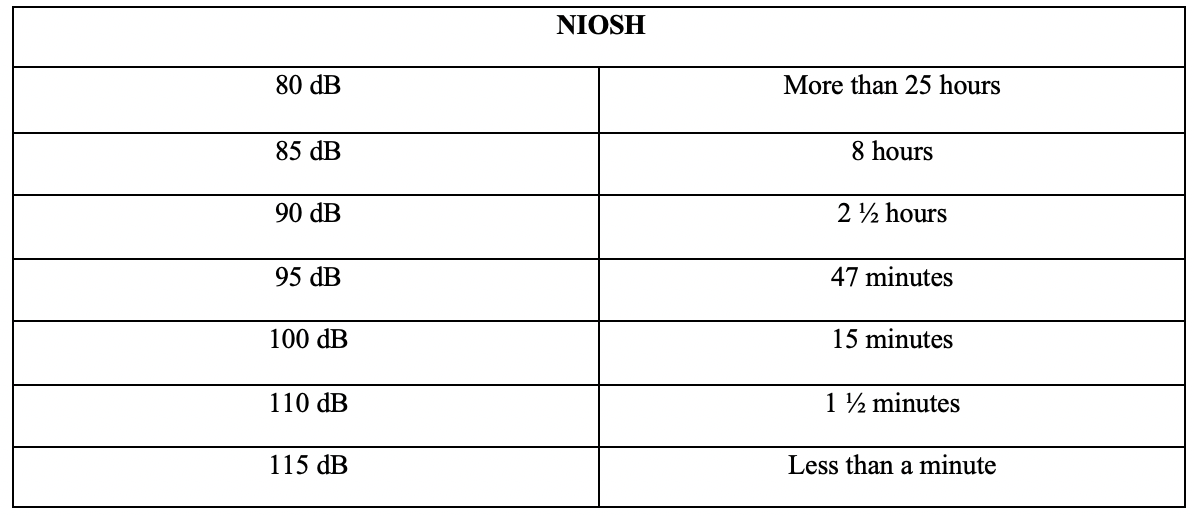
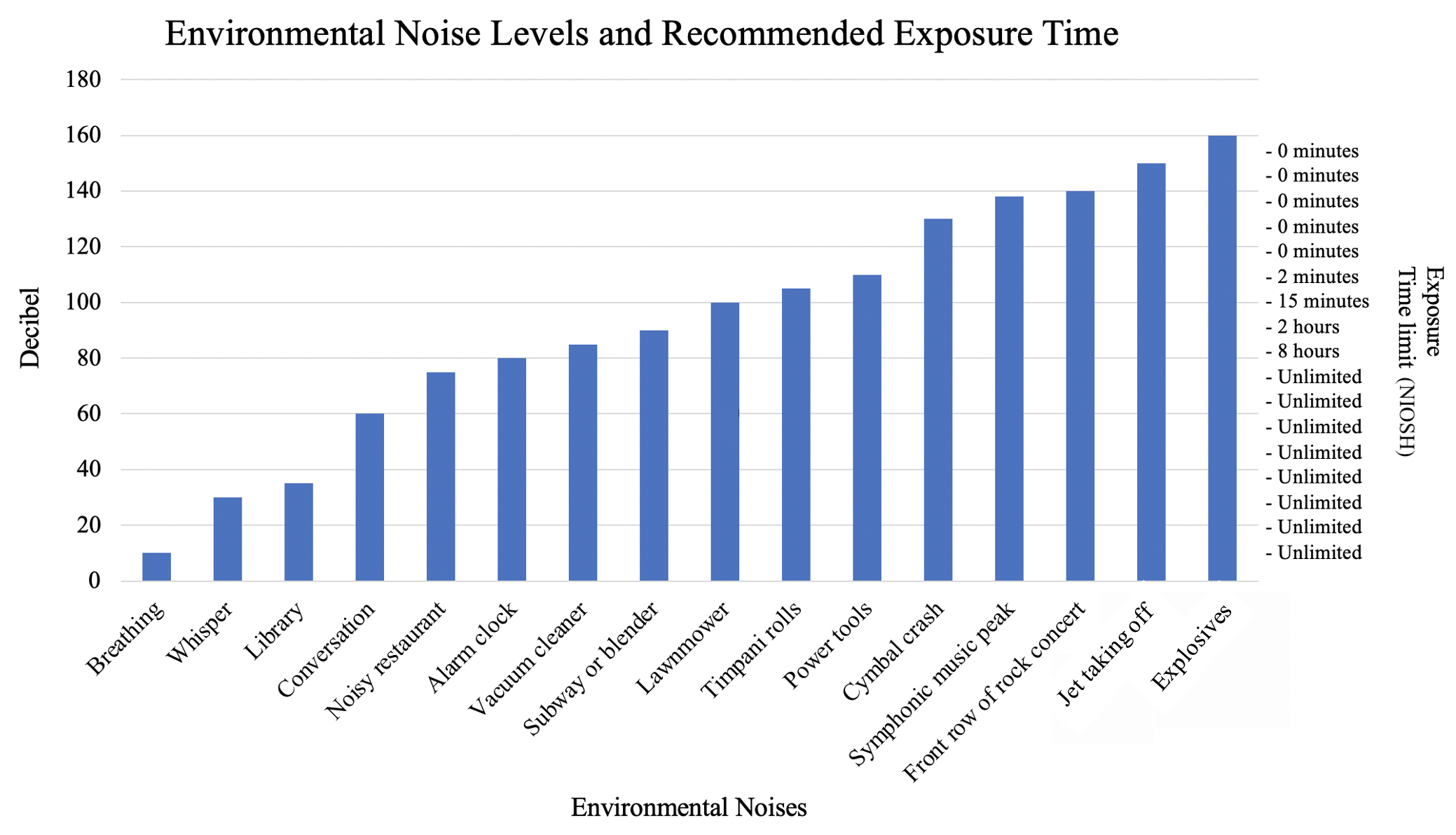
-
Daily sound dosage is similar to daily salt intake. It is cumulative throughout the day, and the right amount is healthy, but too much can be harmful.
-
All experiences during a 24-hour period which expose your patient to sound must be included. These can be:
-
Sporting events
-
Video games
-
Toys
-
Farming equipment
-
Concerts
-
Personal music players
-
Commuting
-
-
It is individual to each person and different each day.
-
Dose = Intensity + Time
-
How loud a sound is combined with how long the patient listened.
-
-
The following are a few examples of daily noise dosage (percentages according to NIOSH guidelines) with and without hearing protection. Note the daily noise exposure total under each example - some are safe and others not. You can compute additional examples of daily noise exposure on this website.
-
Under the Occupational Noise Regulations select "NIOSH"
-
Using a decibel app on your phone, measure the current volume of your environment
-
Enter in your decibel level in the "Sound Level dB(A)" box
-
Enter your length of time in the environment in the "Exposure Time" boxes
-
Your sound dose results will appear as a percentage of your daily noise allowance
-
-
Music Example without Hearing Protection
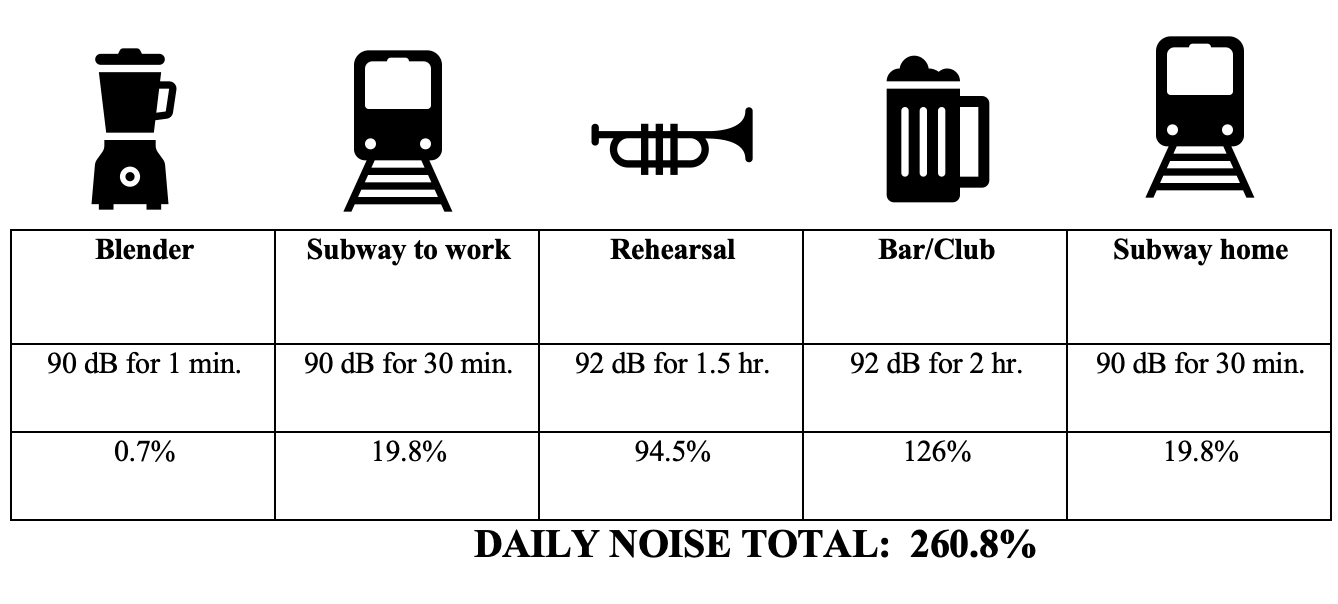
Music Example with Hearing Protection
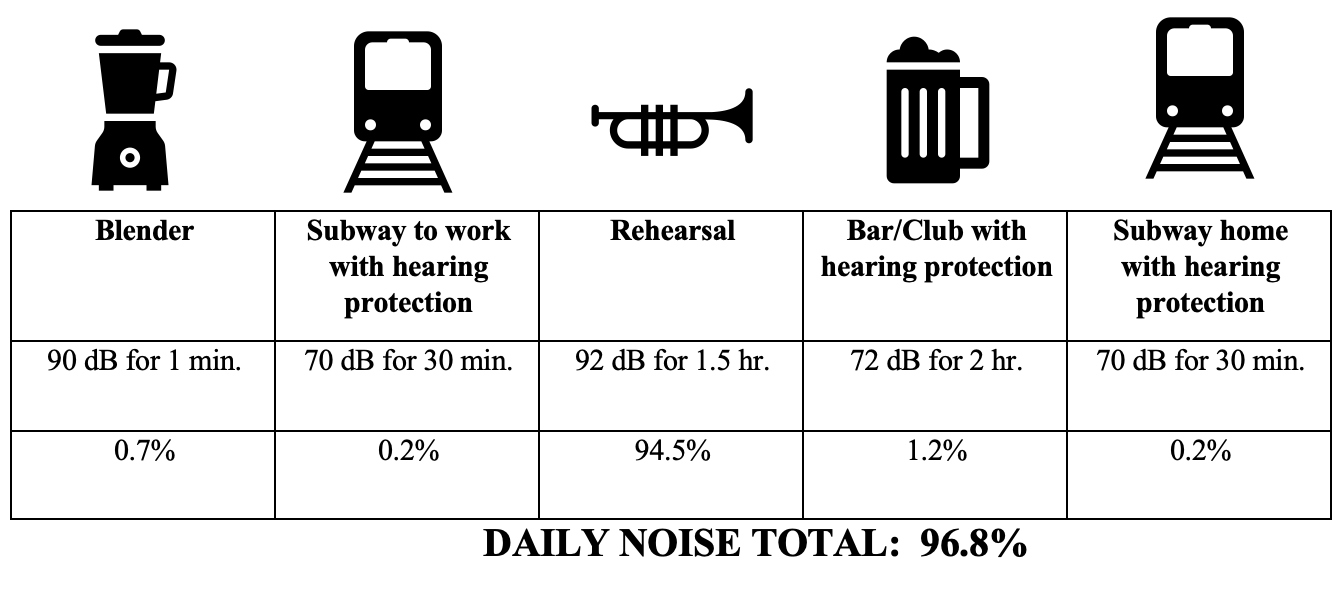
Music Example without Hearing Protection
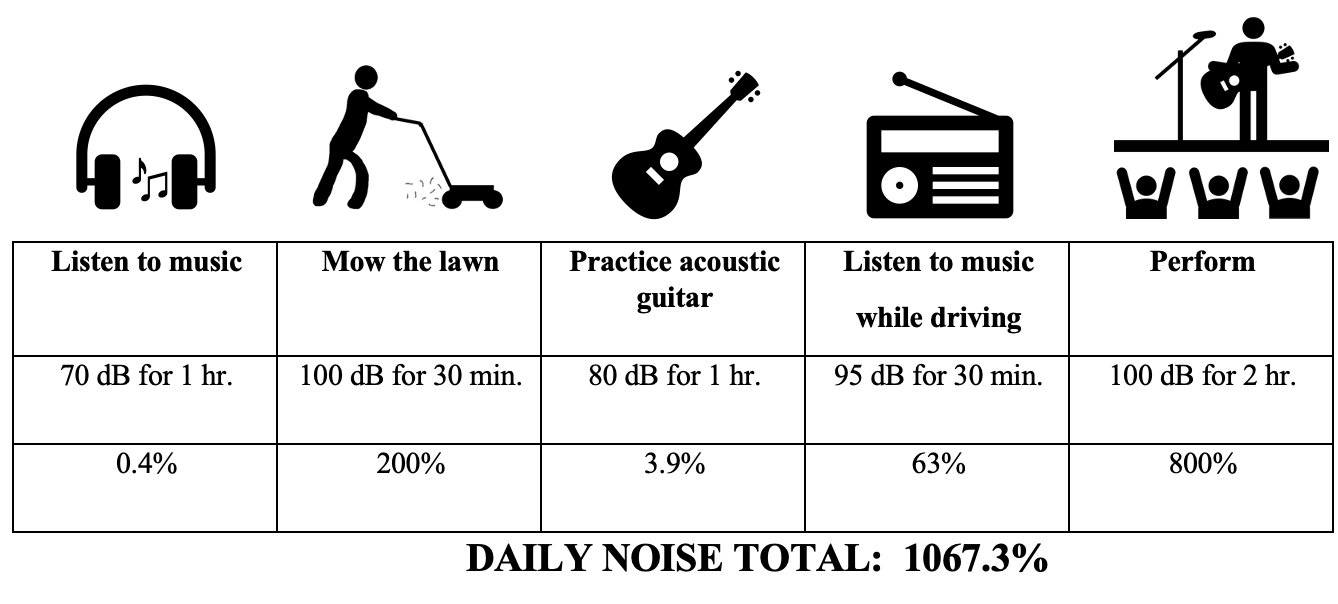
Music Example with Hearing Protection
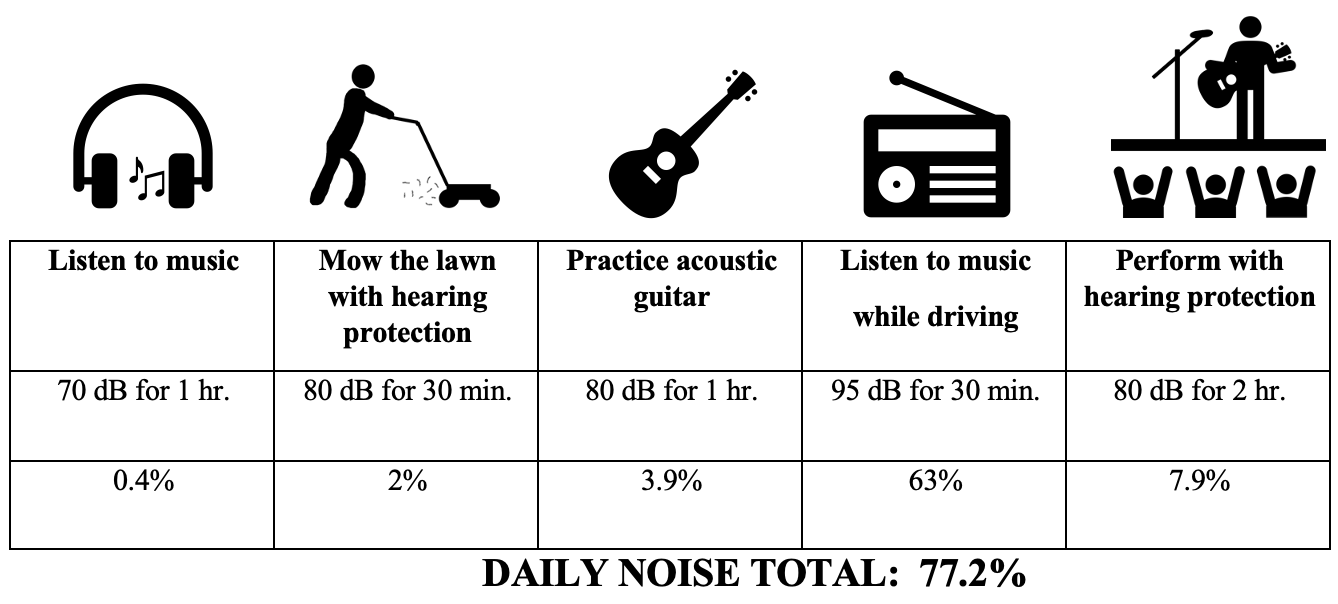
-
Personal listening devices can cause hearing loss when played loudly for long periods of time.
-
Overexposure: 82% of teenagers say they listen to music every day for approximately two and a half hours (Rideout & Robb, 2019).
-
High volume + long duration = damage
-
The extent of damage is predicted by how LOUD and how LONG they are listening, not what listening device is used.
-
Preferred volume is subjective and personal. One person's "too loud" is a safe listening level, while another person's "quiet" is not. Some phone applications can help estimate risk, but an audiologist's measurement is more exact. It is important to measure your patient's typical listening level to help inform them of any possible risks. Measure your patient's listening level through a manikin. [See "use manikins to test preferred volume levels" below]
-
-
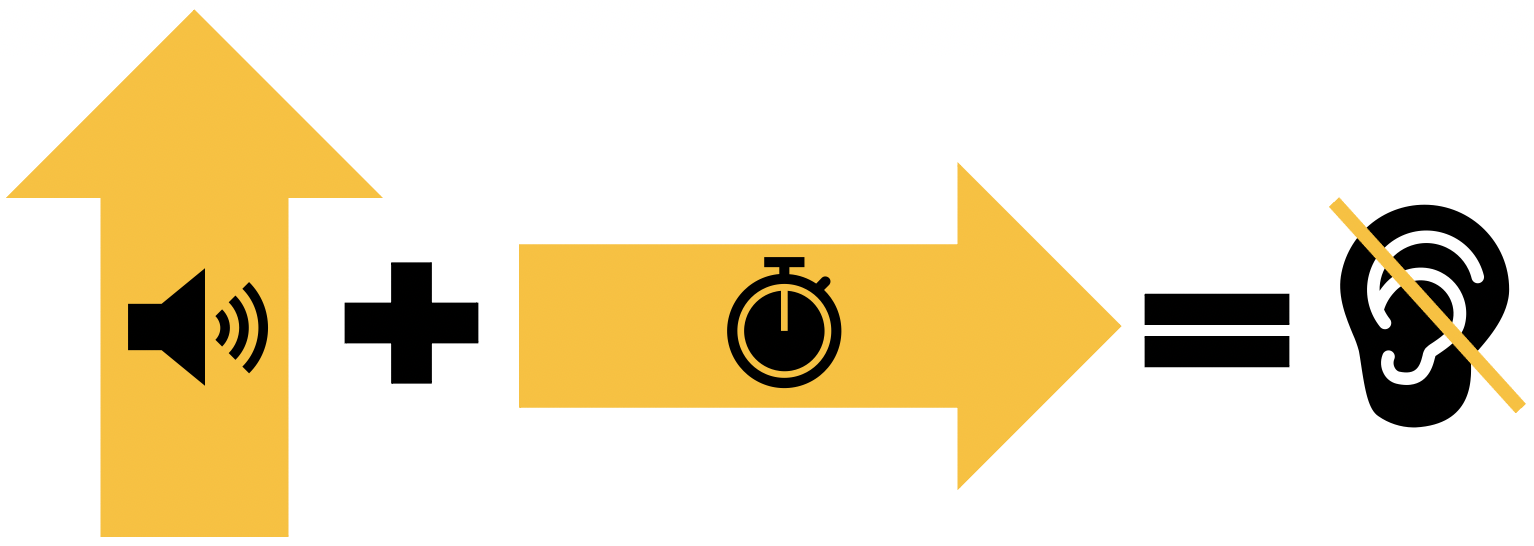
Additional Risk Factors for Music Listeners
-
The type of headphone/earbud they use doesn't matter - it's the volume that does!
-
What patients need to know about listening in noisy environments:
-
Even if your patient's preferred listening levels in a quiet background is safe, research shows that listeners prefer to listen to music at a higher volume in environments with a lot of background noise (riding on a bus, walking in traffic, on a plane, in a crowded room, etc.).
-
Active noise canceling: Headphones and earbuds that are advertised as active noise canceling (ANC) use a technique called phase cancellation to reduce noise. They are good for canceling out regular droning noise like in an airplane cabin.
-
Noise isolating: Headphones and earbuds that are advertised as noise isolating simply block the noise as earmuffs would. They are better for abrupt, irregular sounds encountered in busy or crowded areas, or for constant noise.
-
Bone conduction: Headphones that conduct soundwaves through the bone of the skull rather than through the air of the ear canal. This allows listeners more situational awareness because these headphones do not cover the ears and therefore do not block out surrounding noise. They can also be useful for listening to music when the ear canal is obstructed, such as when swimming. They can still cause hearing damage if played too loud, and preferred listening levels may be higher due to having to compete with louder background noise.
-
Output limiting headphones or earbuds: Output limiting transducers limit the volume to a specified level, typically 85 dB. This is safe when listening for extended periods of time.
-
The earphones or buds limit the volume level, not the device that is playing the music.
-
They are the best option for safe listening. Regardless of how high your patient sets the volume, the output of the earphones/buds to their ears is limited.
-
-
Use manikins to test preferred volume levels: Manikins have microphones in their ears attached to sound level meters outside of their “bodies.” A listener’s headphone or earbud is placed on/in the manikins’ ear and music is played at the user’s preferred level. The dB level of the sound in the manikin’s ear is measured by the sound level meter.
-
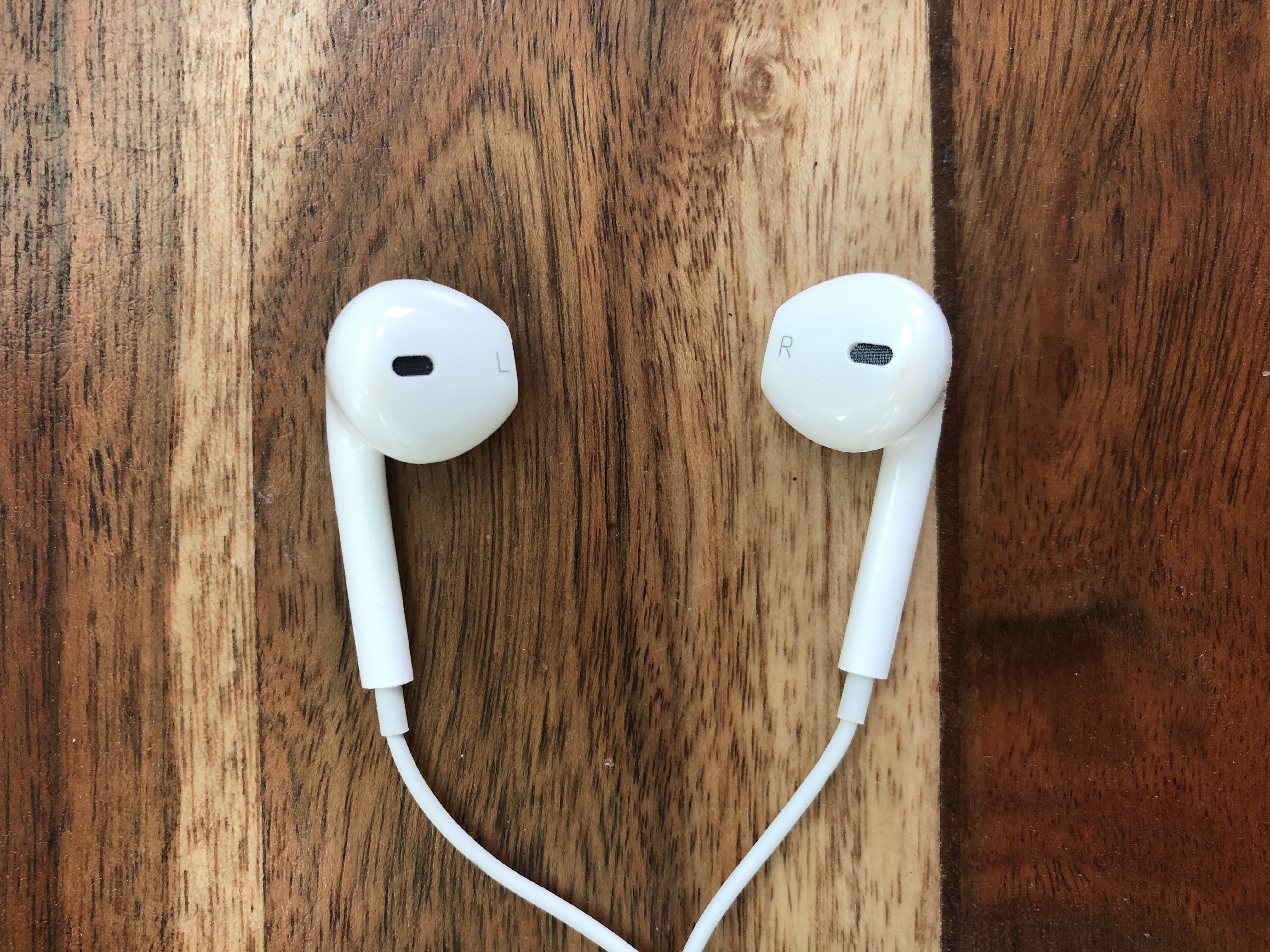
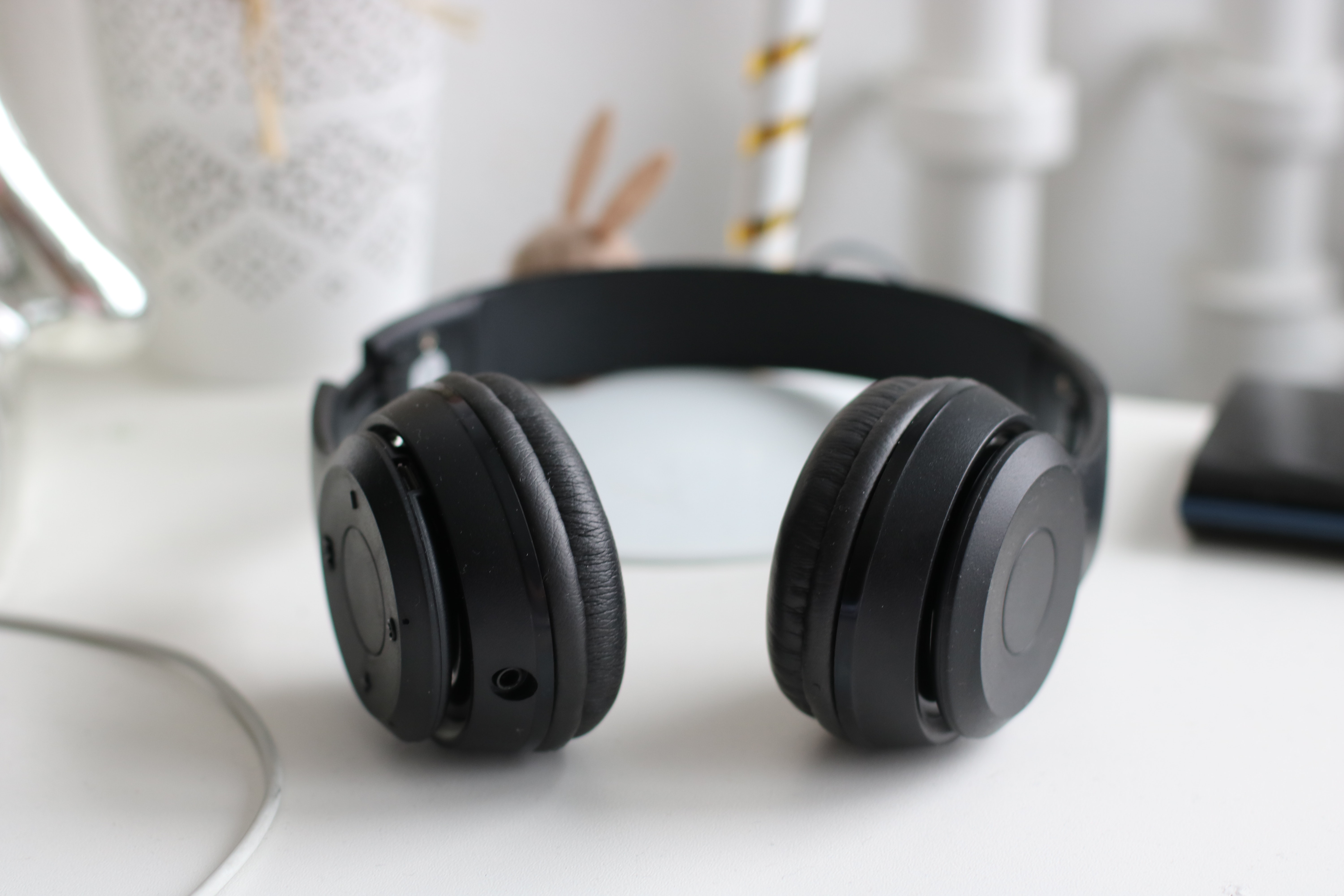

-
Multiple Temporary Threshold Shifts can be dangerous.
-
Temporary Threshold Shifts can occur after continuous listening to loud noise or music. After leaving the loud environment (bar, club, concert), a listener may experience reduced hearing abilities; sounds become fuzzy or muted. It may be up to 18 hours before sounds seem normal again.
-
Hearing thresholds may return to previous levels and tinnitus may resolve, but that does not mean that no damage was done. Animal models suggest that permanent changes to the auditory system, "Hidden Hearing Loss," can occur (Schaette & McAlpine, 2011).
-
There may be degeneration of the auditory nerve pathway, even when thresholds return to normal. This may prematurely "age" the ear, similar to how sun exposure prematurely ages the skin.
-
Complex listening tasks (understanding speech in noise, nuances in music, musical sensitivity) may be permanently affected.
-
Repeated Temporary Threshold Shifts may result in permanent hearing loss (Liberman & Kujawa, 2017).
-
-
Making music can result in hearing loss.
-
Performers: Almost all musicians have experienced hearing loss at some point in their careers (Chasin, 2014; Greasley et al., 2020).
-
In one study (Chasin, 2014)
-
52% of classical musicians and 30% of rock musicians were found to have some degree of permanent hearing loss.
-
80% of musicians immediately following their performance also had temporary music-induced hearing loss.
-
-
Setting: Some concerts and music rehearsals have dangerous volume levels resulting in an overall noise dose of 104 - 9,455% (Hodges, 2009). Music venues have drastically different acoustics - think of a high school gym dance with a live band, compared to a string quartet in a large rehearsal space designed to reflect only necessary sounds. It is important to inform your musician patients of the various hearing risks different settings may hold.
-
Instruments: Brass, woodwind, and percussion players are particularly susceptible to music-induced hearing loss because of high volume levels and high frequencies. If your patient plays one of these instruments, or sits near one, they may be at an increased risk for MIHL (Smith et al., 2019).
-
-
-
Other risk factors for musicians (Phillips et al., 2008).
-
Higher musical range and frequencies (high brass and woodwind players are often at a greater risk of MIHL than low brass and low strings) (Hodges, 2009)
-
Higher decibel or volume level (typically mezzo forte and higher)
-
High reverberation in the room (Smith et al., 2019)
-
Riskier placement in the ensemble (such as in front of the brass or percussion) (Smith et al., 2019)
-
Genetic makeup and lifestyle choices
-
Click here to read about genetic risks for MIHL
-
Click here to read about the correlation between smoking and hearing loss
-
-
High daily and weekly length of exposure (rehearsals, practice, performances)
-
Student musicians
-
Student musicians showed poorer hearing for either 6,000 or 4,000 Hz hearing thresholds in over 50% of the students in one study. In other words, over half the students in the study experienced some amount of hearing loss. This occurred across all instruments, including vocalists (Phillips et al., 2008).
-
-
Many years of exposure
-
Higher stress levels and distaste for the musical piece (Chasin, 2014)
-
Two theories:
-
Certain stress hormones released in the inner ear can increase susceptibility for hearing loss
-
Feedback loops between the brain and inner ear - if the music is enjoyed, hearing loss susceptibility decreases
-
-
-
Click here for more information on music making and hearing loss. Click here for information on musician health and safety. Additional information on sound awareness and safety appears at the UI-SAFE Facebook page here.
What can Audiologists do to help?
-
Audiologists can encourage motivation to protect their patient's hearing.
-
Lack of knowledge about MIHL or poor motivation to protect hearing increases musicians' risk of damage through loud music and noises.
-
The Health Belief Model shows that health behavior changes are a result of four factors (Rosenstock, 1966):
-
Self-motivation to make your health relevant
-
"I need to protect my hearing health."
-
-
Belief that you are susceptible to health problems
-
"Because I listen to loud music I am susceptible to hearing loss."
-
-
Understanding possible barriers to change the behavior
-
"But I LIKE listening to my music loud, and earplugs feel uncomfortable. Maybe I need to think of the 'cost' of not protecting my hearing"
-
-
Benefits to changing the behavior
-
"If I choose to use earplugs, or avoid loud music and sounds, I will be able to preserve my hearing so I can continue to hear music, speech, and not need hearing aids when I am older."
-
-
-
See here and here for further information on self-efficacy and self-advocacy.
-
Provide Patients with Tips for Further Listening
-
Encourage your patients to check their volume level.
-
Applications: Check the volume level. There are many phone apps that can recognize dB levels and warn if the environment or music is too loud. In addition, there are warnings and limits on smartphones that can be used to monitor output levels.
-
iPhone users:
-
In the "Health" app, listeners can activate the "Headphone Audio Levels" data tracker to monitor their headphone volume level and duration. This information can be used to create safer listening experiences.
-
In the Settings app, "Sounds & Haptics" section, click on "Headphone Safety" to enable "Reduce Loud Sounds." The iPhone will analyze the output level of the headphones and reduce levels above their set limit (85 dB is standard).
-
-
-
The environment is too loud if:
-
Your patient has to raise their voice to be heard
-
Your patient can't hear someone 3 feet away speaking at a typical conversational level
-
Speech sounds muffled and dull after leaving the noisy environment
-
Your patient experiences ringing in the ears (tinnitus) after leaving the noisy environment
-
-
Be careful with volume changes: Listeners often increase the loudness on their personal listening devices or radio in order to cover loud background noise (e.g., on the subway, on a treadmill, etc.).
-
Encourage your patient to be mindful of their listening habits and preferred volume level when listening to music in noisy environments. If they are cranking up the volume very high every time they enter a noisy area, they may be exposing themselves to damaging levels of sound without realizing it.
-
Remind patients to be aware of adjusting their volume louder when listening in background noise.
-
Over-the-ear and in-ear headphones can block out background noise; noise cancelling earbuds can also block out background noise.
-
Using these can prevent them from increasing the volume level of their music when background noise is present, and keep them listening at a healthy volume level.
-
Use of these headphones and earbuds can still result in damage if they listen to them at high volumes for extended periods of time (Hoover & Krishnamurti, 2010; Fligor & Cox, 2004; Hussain et al., 2018; Fligor & Meinke, 2009; Breinbauer et al., 2012).
-
-
-
-
Set up a listening environment with hearing protection in mind.
-
Equipment: Use noise cancelling and/or output limiting headphones or earbuds.
-
Environment: Set up the listening environment for success. This may include using heavy curtains and carpet to help dampen extraneous sounds or unhealthy noise levels.
-
Recommend your musician patients practice outside or in a larger, less reverberant space.
-
-
Duration: Noise exposure can add up over many hours and years before becoming noticeable as hearing loss. Encourage your patients to take precautions before irreversible damage is done. Remind them to build in quiet times away from loud noise and music each day (16-18 hours of quiet after a loud concert).
-
Volume: Remind your patient to be mindful of the sound level of their instrument, surrounding instruments, and the environment, whether playing alone or in ensembles.
-
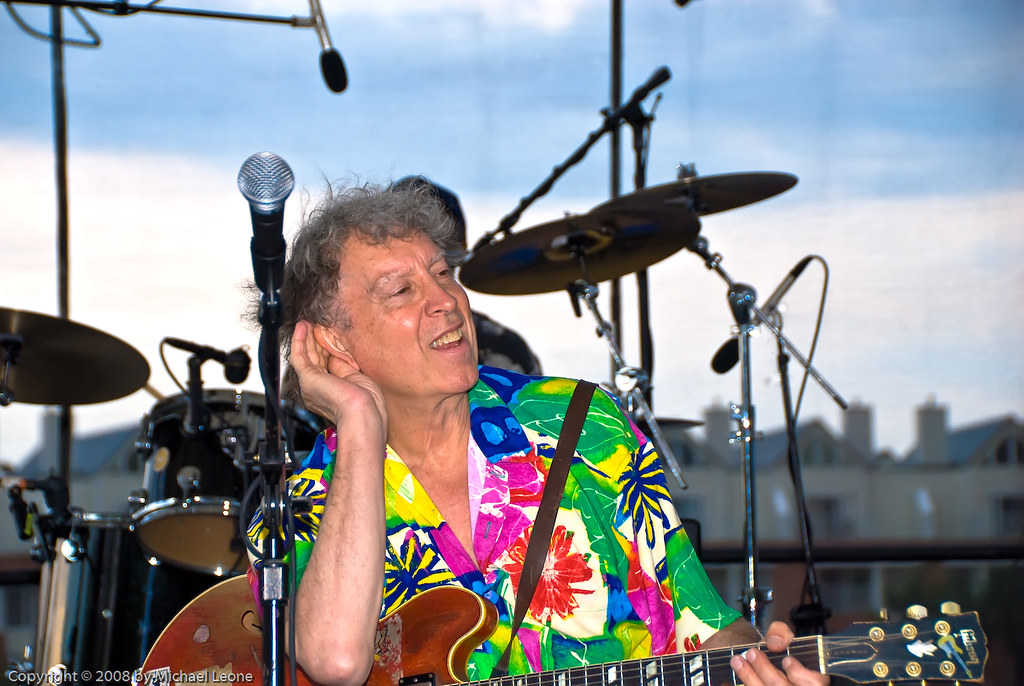
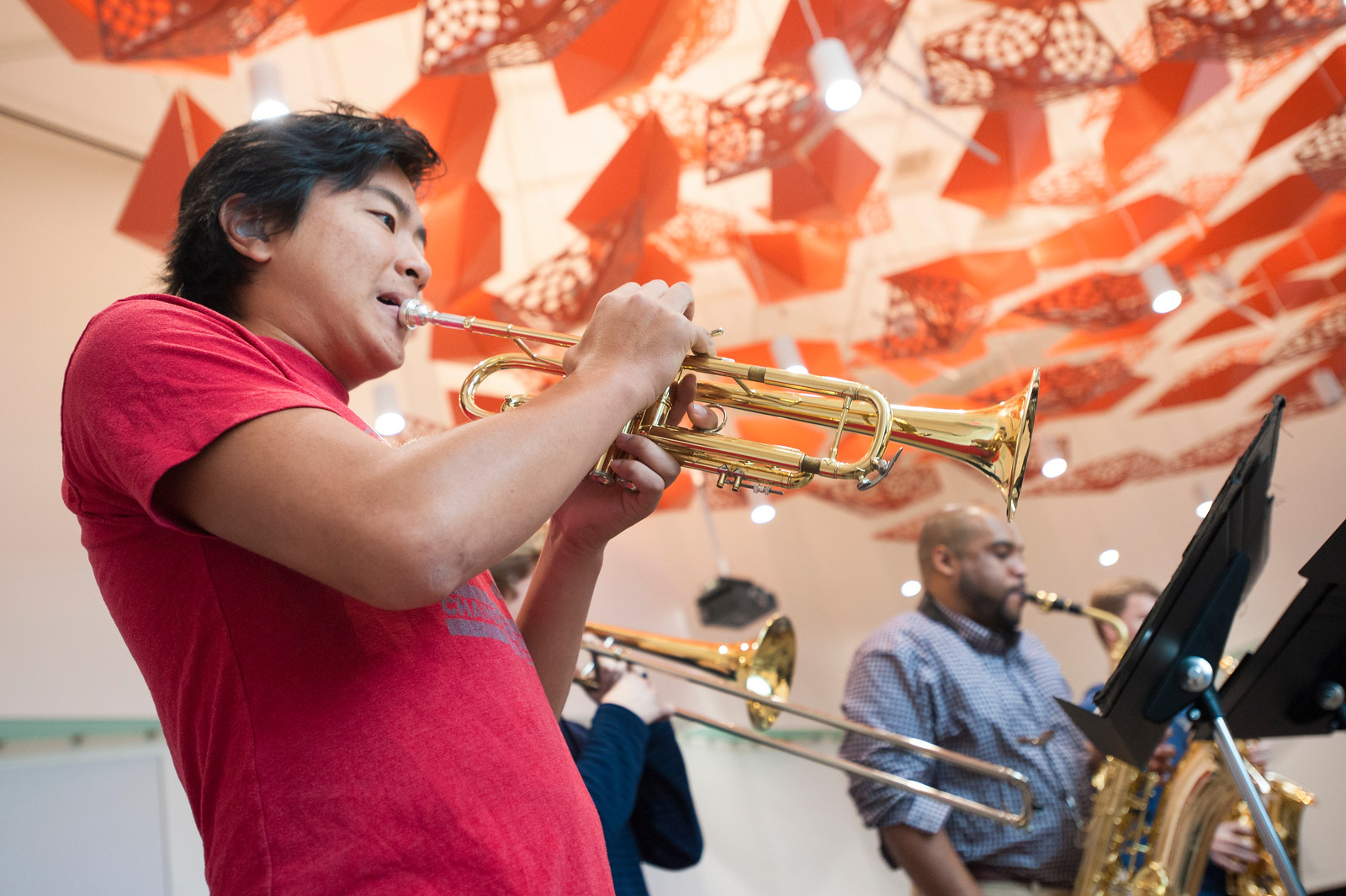
-
Use earplugs at live concerts or in other loud environments.
-
Universal fit musicians' earplugs: Talk to your musician patients about being fit for a pair of specially fit earplugs. Universal fit musicians' earplugs cost between $15 - $50, more than standard plugs from the drug store, but music sounds much better. The quality of the sound filter affects the price. These are sometimes called musicians' earplugs, filtered earplugs, ER-20 high-fidelity, or musicians' hearing protection. Musicians' earplugs lower all frequencies a small amount and equally. Thus, speech and music are clear, but the loud sounds are less likely to cause damage.
-
Custom fit musicians' earplugs: These protective devices cost more ($100 - $200) but are custom fit for your patient's ears. These are generally regarded as the most comfortable and best listening experience for musicians. They are also very durable. One pair can save your patient's hearing for a lifetime!
-
Foam earplugs: These can protect ears as well and are very cost effective. However, they will negatively impact the sound quality of music. These are best used when your patient wants to cut out as much sound as possible, for example when they are mowing the lawn, or using power tools or heavy equipment. It is still wise to check these to make sure your patient is wearing them correctly for optimal protection.
-
Check your patient's hearing protection: Audiologists can check the attenuation and fit of the earplugs, as well as test them at the volume level the patient usually listens to their music. This can help determine if the earplugs are truly protective.
-
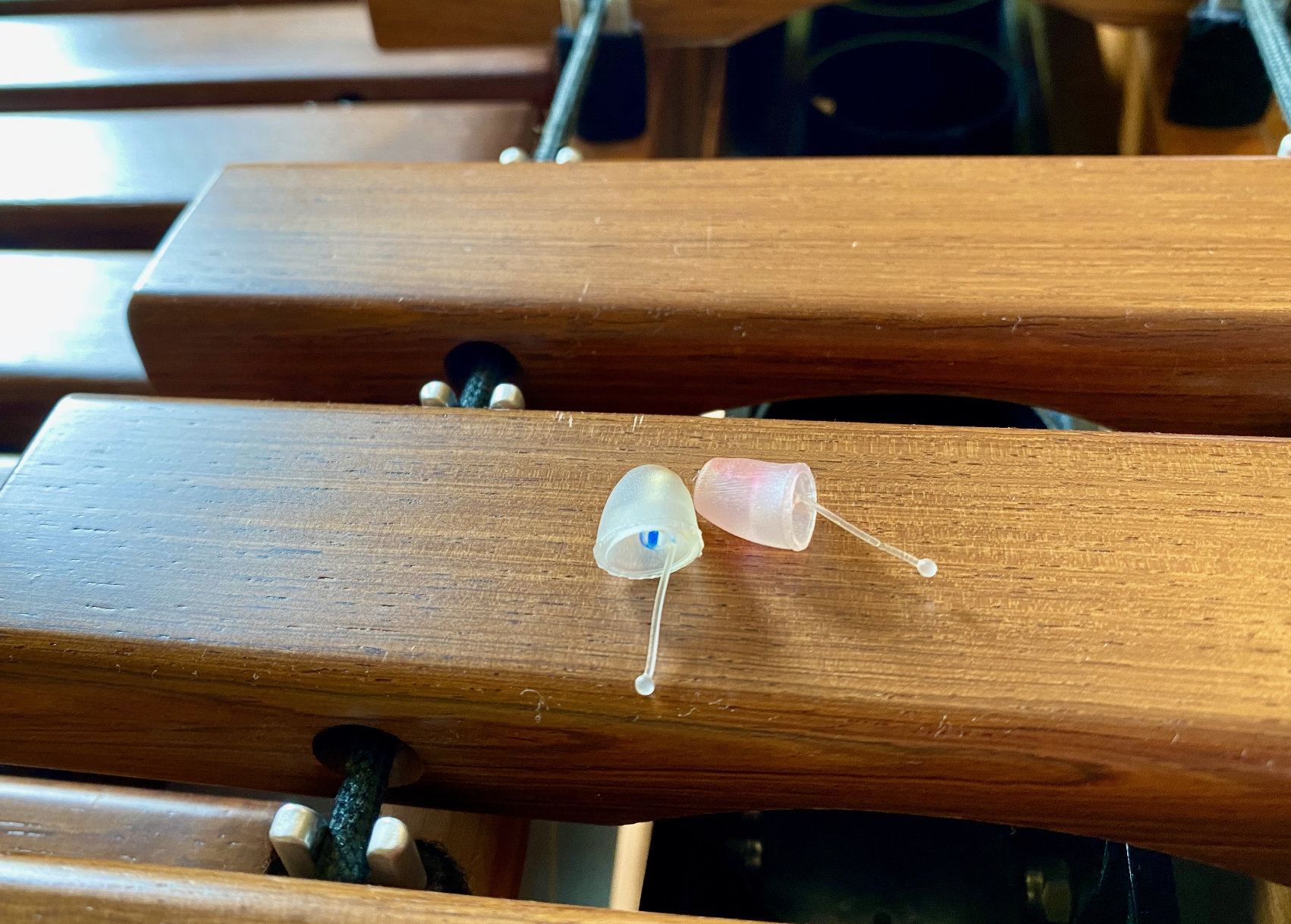
-
Quiet time: Moderation is key. After being exposed to a loud sound such as mowing the lawn or a concert, allow the ear to heal and “reset” by providing 16-18 hours of quiet and low levels of sound. Remind your patients not to go to two loud concerts in a row!
References
1.1 billion people at risk of hearing loss. (2015, August 12). Retrieved July 31, 2020, from https://www.who.int/mediacentre/news/releases/2015/ear-care/en/
Breinbauer, H. A., Anabalón, J. L., Gutierrez, D., Cárcamo, R., Olivares, C., & Caro, J. (2012). Output capabilities of personal music players and assessment of preferred listening levels of test subjects: outlining recommendations for preventing music-induced hearing loss. The Laryngoscope, 122(11), 2549-2556.
Chasin, M. (2014). Hear the Music: hearing loss prevention for musicians. Toronto, Ontario: Musicians Clinics of Canada.
Fligor, B. J., & Cox, C. L. (2004). Output level of commercially available portable compact disc players and the potential risk to hearing. Ear and Hearing, 25, 513–527. doi:10.1097/00003446-200412000-00001
Fligor, B. J., & Meinke, D. (2009). Safe-listening myths for personal music players. The ASHA Leader, 14(7), 5-6.
Greasley, A.E., Fulford, R.J., Pickard, M., & Hamilton, N. (2020). Help Musicians UK hearing survey: Musicians’ hearing and hearing protection. Psychology of Music, 48(4), 529-546.
Hodges, D. (2009). Brains and Music, Whales and Apes, Hearing and Learning . . . and More. Update: Applications of Research in Music Education, 27(2), 62-75.
Hoover, A., & Krishnamurti, S. (2010). Survey of college students’ MP3 listening: Habits, safety issues, attitudes, and education. American Journal of Audiology, 19(1), 73–83. doi:10.1044/1059-0889(2010/08-0036)
Hussain, T., Chou, C., Zettner, E., Torre, P., Hans, S., Gauer, J., . . . Nguyen, Q. (2018). Early Indication of Noise-Induced Hearing Loss in Young Adult Users of Personal Listening Devices. Annals of Otology, Rhinology & Laryngology, 127(10), 703-709.
Kahari, K.R., Zachau, G., Eklof, M., et al. (2003). Assessment of hearing and hearing disorders in rock/jazz musicians. International Journal of Audiology, 42, 279-288.
Kujawa, S. G., & Liberman, M. C. (2009). Adding insult to injury: Cochlear nerve degeneration after "temporary" noise-induced hearing loss. The Journal of Neuroscience, 29(45), 14077–14085. https://doi.org/10.1523/JNEUROSCI.2845-09.2009
Levey, S., Levey, T., & Fligor, B. J. (2011). Noise exposure estimates of urban MP3 player users. Journal of Speech, Language, and Hearing Research, 54(1), 263–277. doi:10.1044/1092-4388(2010/09-0283)
Li, X., Rong, X., Wang, Z., & Lin, A. (2020). Association between smoking and noise-induced hearing loss: A meta-analysis of observational studies. International Journal of Environmental Research and Public Health, 17(4), 1201. https://doi.org/10.3390/ijerph17041201
Liberman, M.C., & Kujawa, S.G. (2017). Cochlear synaptopathy in acquired sensorineural hearing loss: Manifestations and mechanisms. Hearing Research, 349, 138-147.
Miao, L., Ji, J., Wan, L. et al. (2019). An overview of research trends and genetic polymorphisms for noise-induced hearing loss from 2009 to 2018. Environ Sci Pollut Res, 26, 34754–34774. https://doi.org/10.1007/s11356-019-06470-7
"Noise-Induced Hearing Loss." National Institute of Deafness and Other Communication Disorders, U.S. Department of Health and Human Services, 14 June 2019, https://www.nidcd.nih.gov/health/noise-induced-hearing-loss.
Olson, A. D., Gooding, L. F., Shikoh, F., & Graf, J. (2016). Hearing health in college instrumental musicians and prevention of hearing loss. Med Probl Perform Art, 31(1), 29-36.
Phillips, S. L., Shoemaker, J., Mace, S. T., & Hodges, D. A. (2008). Environmental factors in susceptibility to noise-induced hearing loss in student musicians. (Report). Medical Problems of Performing Artists, 23(1), 20-28.
Rideout, V., and Robb, M. B. (2019). The Common Sense census: Media use by tweens and teens, 2019. San Francisco, CA: Common Sense Media.
Rosenstock, I.M. (1966). Why people use health services. Milbank Memorial Fund Quarterly, 44, 94-124.
Schaette, R., & McAlpine, D. (2011). Tinnitus with a normal audiogram: Physiological evidence for hidden hearing loss and computational model. Journal of Neuroscience, 31(38), 13452-13457.
Smith, K., Neilsen, T., & Grimshaw, J. (2019). University student musician noise-dosage study measuring both ensemble and full-day noise exposure. The Journal of the Acoustical Society of America, 145(6), EL494.
Verbeek, J. H., Kateman, E., Morata, T. C., Dreschler, W. A., & Mischke, C. (2014). Interventions to prevent occupational noise-induced hearing loss: A Cochrane systematic review. International Journal of Audiology, 53(0 2), S84–S96. http://doi.org/10.3109/14992027.2013.857436
Click here to review references used in preparation of this website.
1. All images on this website are used under Creative Commons or other licenses or have been created by the website developers.
2. Click here to access the sources of images on this page.
